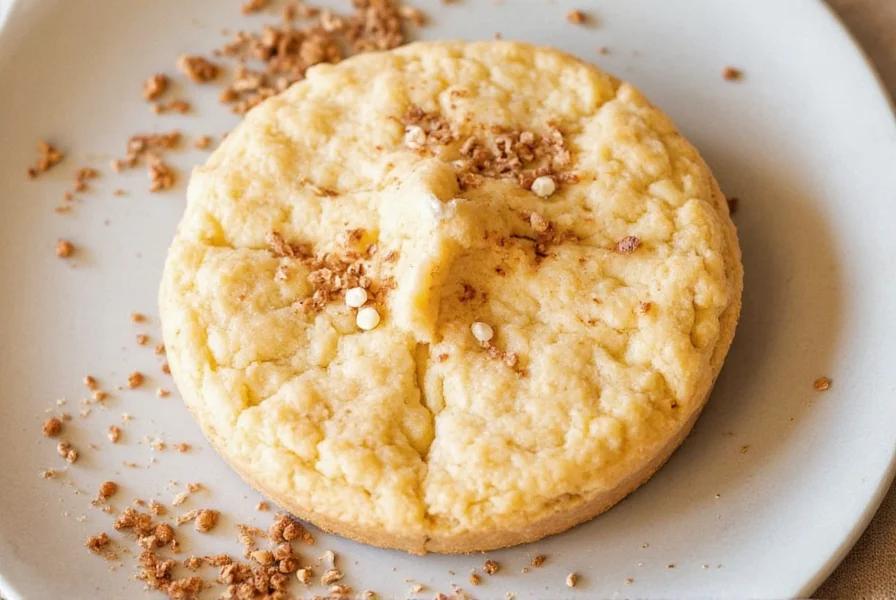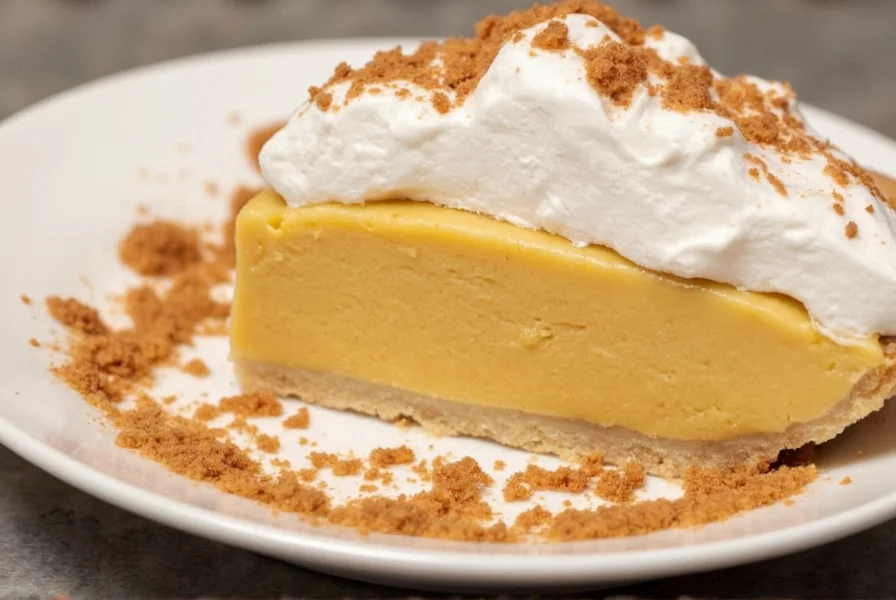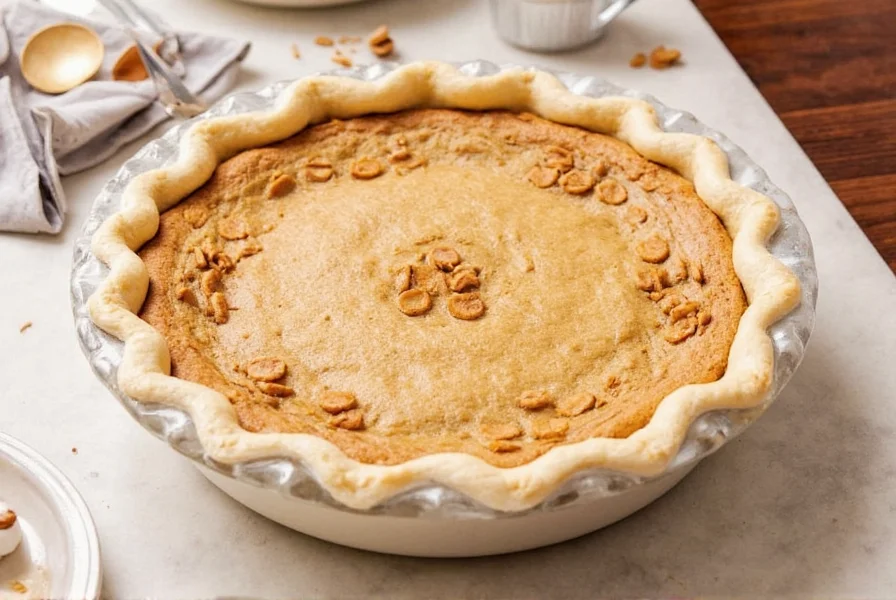Nothing says comfort quite like a slice of homemade butterscotch cinnamon pie fresh from the oven. This beloved dessert brings together the deep, caramelized sweetness of butterscotch with the warm, familiar spice of cinnamon in perfect harmony. Unlike traditional butterscotch pies that can sometimes be one-dimensional, the addition of cinnamon adds complexity and depth that elevates this dessert from simple to spectacular.
Creating an exceptional butterscotch cinnamon pie requires understanding the delicate balance between the rich butterscotch base and the aromatic cinnamon. The magic happens when high-quality brown sugar caramelizes properly and the cinnamon is measured precisely—not so little that it disappears, nor so much that it overpowers the butterscotch notes.
| Prep Time | Cook Time | Total Time | Servings |
|---|---|---|---|
| 25 minutes | 45 minutes | 2 hours 10 minutes | 8 servings |
The History Behind Butterscotch Cinnamon Pie
Butterscotch originated in England during the 19th century, created by boiling butter and sugar together. The name likely comes from "scorched butter" or "buttery scotch." Cinnamon, meanwhile, has been prized for thousands of years across multiple cultures for both its flavor and medicinal properties. The combination of these two ingredients in pie form emerged in American baking traditions, particularly gaining popularity in Midwest households where butterscotch desserts were already beloved.
Essential Ingredients for Perfect Butterscotch Cinnamon Pie
The quality of your ingredients directly impacts the final result of your homemade butterscotch cinnamon pie recipe. Here's what you need to know:
- Brown sugar - Use dark brown sugar for deeper molasses flavor that creates authentic butterscotch notes
- Unsalted butter - Essential for controlling salt content and creating that signature butterscotch richness
- Cinnamon - Freshly ground provides the most vibrant flavor for your butterscotch cinnamon pie filling
- Eggs - Room temperature ensures proper emulsification with the butterscotch base
- Vanilla extract - Complements both butterscotch and cinnamon flavors
- Pie crust - A buttery, flaky homemade crust makes all the difference

Step-by-Step Butterscotch Cinnamon Pie Instructions
Follow these detailed instructions for the best butterscotch cinnamon pie from scratch:
- Prepare the crust - Roll out your pie dough and fit it into a 9-inch pie plate. Crimp the edges and chill while preparing the filling.
- Make the butterscotch base - In a medium saucepan, melt 1 cup of unsalted butter over medium heat. Gradually whisk in 2 cups of packed dark brown sugar until fully dissolved.
- Add cinnamon - Stir in 1½ teaspoons of freshly ground cinnamon along with ¼ teaspoon of salt. Cook for 2 minutes, stirring constantly.
- Temper the eggs - In a separate bowl, whisk 3 large eggs. Slowly pour about ½ cup of the hot butterscotch mixture into the eggs while whisking constantly.
- Combine - Pour the tempered egg mixture back into the saucepan with the remaining butterscotch, stirring constantly.
- Cook the filling - Continue cooking over medium-low heat for 3-4 minutes until the mixture thickens slightly. Remove from heat and stir in 1 teaspoon of vanilla extract.
- Fill the crust - Pour the warm filling into the prepared pie crust.
- Bake - Bake at 350°F (175°C) for 35-45 minutes, until the center is set but still slightly jiggly.
- Cool completely - Allow the pie to cool at room temperature for at least 2 hours before serving to ensure proper setting.
Common Mistakes to Avoid When Making Butterscotch Cinnamon Pie
Even experienced bakers can encounter issues with this deceptively simple dessert. Here's how to avoid the most frequent problems with your easy butterscotch cinnamon pie instructions:
- Overcooking the filling - The butterscotch mixture should thicken slightly but remain pourable. Overcooking creates a rubbery texture.
- Using pre-ground cinnamon - Pre-ground cinnamon loses potency quickly. Freshly grinding whole cinnamon sticks yields superior flavor for your butterscotch cinnamon pie filling.
- Rushing the cooling process - Cutting into the pie too soon results in a runny filling. Patience ensures perfect sliceability.
- Incorrect oven temperature - An oven thermometer ensures accurate baking temperature, crucial for proper setting of the butterscotch cinnamon pie baking temperature.
- Skipping the tempering step - Adding eggs directly to hot butterscotch will cause scrambling. Proper tempering creates a smooth, custard-like texture.
Serving and Storage Tips
Butterscotch cinnamon pie reaches its full flavor potential when served at room temperature. For an extra-special treat, pair with lightly sweetened whipped cream or vanilla ice cream. The classic butterscotch cinnamon pie crust provides the perfect buttery contrast to the rich filling.
Store leftovers covered at room temperature for up to 2 days or in the refrigerator for up to 4 days. For longer storage, wrap individual slices tightly and freeze for up to 2 months. Thaw frozen slices in the refrigerator overnight before serving.

Delicious Variations to Try
Once you've mastered the traditional butterscotch cinnamon pie ingredients, experiment with these creative twists:
- Nutty version - Add ½ cup of toasted pecans or walnuts to the filling before baking
- Spiced variation - Include a pinch of nutmeg or allspice along with the cinnamon
- Boozy twist - Stir in 1-2 tablespoons of bourbon or rum to enhance the butterscotch notes
- Swirl technique - Create a marbled effect by adding dollops of chocolate ganache before baking
- Gingersnap crust - Substitute a gingersnap cookie crust for an extra layer of spice
Frequently Asked Questions
Can I use light brown sugar instead of dark brown sugar for butterscotch cinnamon pie?
While you can substitute light brown sugar, dark brown sugar contains more molasses which creates the deep, complex butterscotch flavor essential to an authentic butterscotch cinnamon pie. The additional molasses also contributes to the proper texture and color of the filling. For best results, use dark brown sugar as specified in traditional butterscotch cinnamon pie ingredients.
Why did my butterscotch cinnamon pie filling crack during baking?
Cracking typically occurs when the pie is overbaked or cooled too quickly. The butterscotch cinnamon pie baking temperature should be precise (350°F/175°C), and the pie should remain in the oven until the center still has a slight jiggle. Allow the pie to cool gradually at room temperature—avoid placing it near drafts or moving it to a cold surface immediately after baking.
How can I prevent a soggy bottom crust in my butterscotch cinnamon pie?
To prevent a soggy crust, try blind baking your pie crust for 10-15 minutes before adding the filling. Prick the bottom with a fork, line with parchment paper, fill with pie weights or dried beans, and bake until lightly golden. This creates a barrier that helps maintain the classic butterscotch cinnamon pie crust's flakiness despite the moist filling.
Can I make butterscotch cinnamon pie ahead of time for holiday gatherings?
Absolutely! Butterscotch cinnamon pie actually benefits from being made 1-2 days in advance, as this allows the flavors to meld and the texture to fully set. Store covered at room temperature for the best flavor development. This makes it an ideal choice for your holiday celebrations when you want to minimize last-minute baking stress.











 浙公网安备
33010002000092号
浙公网安备
33010002000092号 浙B2-20120091-4
浙B2-20120091-4